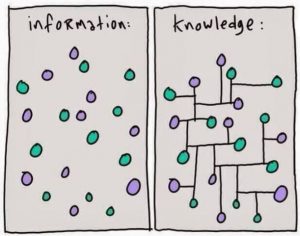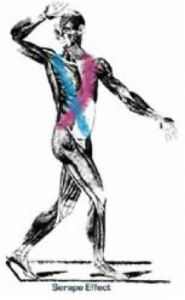restore: the hips program
stability and strength
Welcome to the program! We’re glad you’re here!
Congratulations on deciding to take action to improve the stability and strength of your hips – something which will absolutely translate to improved durability and speed – regardless of your sport!
Here’s my best advice to you, especially if this is the first time you’re reading these words:
DON’T WAIT. Get started now, when the idea is hot and the emotion is strong.
The longer you wait to get started, the greater the likelihood you’ll fall prey to the law of diminishing intent.
We intend to take action when the idea strikes us – when the emotion is high. But if we don’t translate that intention into action fairly soon, the urgency starts to diminish. A month from now the passion is cold. A year from now it can’t be found.
“Excellence is the result of caring more than others think is wise;
Risking more than others think is safe;
Dreaming more than others think is practical;
And expecting more than others think is possible.”
-unknown
Embrace the process. Be disciplined.
Here is the greatest value of discipline: self-esteem. Many people who are teaching self-esteem these days don’t connect it to discipline. But once we sense the least lack of discipline within ourselves, it starts to erode our psyche. One of the greatest temptations is to just ease up a little bit. Instead of doing your best, you allow yourself to do just a little less than your best. Sure enough, you’ve started in the slightest way to decrease your sense of self-worth.
If you can know the purpose of each movement you do – what your goals are with it – where your weak links reside, you are bound to get more from them.
If you can learn and truly internalize the most basic concepts of human movement (as we know it today), you will become a MASTER of your body, AND your health.
If you become a master of your own body and leader of your health and wellness, you will get the absolute best results possible from the training you do.
It is up to you. Own it.
It’s up to each of us to decide in which direction we go – what path we follow, with anything in life.
Sometimes, in a moment of indecision, we decide to “try” something for a while. We give it a test drive if you will. We play around with it. In that play, we may never really experience the full benefits that might otherwise be there for us.
Yes, the problem with “test driving” a philosophy, is that you’re very rarely ever FULLY ENGAGED – you’re never FULLY IN. And if you don’t go FULL IN and OWN THAT philosophy, you may not get out of it what you want.
This program won’t work as well as it could if you don’t COMMIT to it.
When you do OWN IT, then you get to then decide for yourself…did it work for you? Do you feel better, stronger, more stable?

There’s a BIG different between random vs organized information!
The bottom line is when we DECIDE to OWN IT, we then are in a position to honestly decide for ourselves IF IT WORKED, or not. We don’t have to rely upon others to tell us, or to show us. We KNOW IT. We FEEL IT.
OWN THE PHILOSOPHY, don’t rent or borrow it.
If you do, I will promise you that there’s no looking back and there’ll be no regret!
What can you expect in this program?
This program is a progressive science-based system to progressively build both the stability and strength of your entire hip girdle.
Please know this, right upfront: It’s not about A muscle.
The idea that it’s your “glute med” that is responsible for hip stability on its own, is both outdated and idiotic. One muscle can’t ever do a job of that magnitude – it’s the responsibility of ALL of the tissues in and around your hip, and trunk as well.
In THIS VIDEO, Dr. Kurt Strecker (co-founder of the Pursuit Athletic Performance gait analysis lab), discusses the all-too-pervasive MYTH that one of the deeper muscles of the hip, the “glute medius,” is able to hold up the trunk on its own. It can’t.
He also discusses the importance of the CORE. If you aren’t also addressing core stability and strength, check out RESTORE: The Core Program.
We’ll revisit some basic skills
Before we get into the nuts and bolts of the stability assessment and training, we’ll take some time to review some fundamentals.
Why?
Time and again, I meet with and speak with athletes looking for the secret or the key, to improving or taking the next step in their training. It’s what I do. ![]()
In nearly every instance, as we look back on their training and progression over the recent and distant past, to assess why they may not have progressed as they hoped, we very often identify that it is the BASIC stuff – the same things we discussed on the day of their first analysis – the fundamentals, that are STILL lacking and/or that haven’t been addressed.
Please keep this in mind as you move forward and look for the magic bullet.
Go back to the basics whenever you are want to make it complicated. Avoid the temptation to be drawn in by some secret recipe or sauce.
Address the basic skills and abilities and look to MASTER those. That, my friends, is your secret recipe and the ultimate key to your success.
Would you like to be able to download and PRINT all of the written information on this page? If so, then CLICK HERE!
What else do you need to know?
You may be asking the question, “what is stability?” Or perhaps, “is there a difference between “stability” and “strength”?
The simple answer is yes. And the difference, which many athletes and coaches confuse or simply may not quite fully understand, is critical for determining how you’re going to approach your training, or whether the training you do will help you improve. After all, lots of athletes “do” core and hip training the wrong way and end up not benefiting at all from their investment of time and energy.
And that sucks.
So, what are the differences?
- Stability, sometimes referred to as motor control in some clinical and training circles, is neurological. It’s in the brain and within the joints themselves. Training stability is essentially “brain training.”
- Strength is simply the ability for muscle and connective tissue (or tissues) to generate force. While strength begins at the level of your nervous system (think of it as simple coordination first), it’s primarily about “muscle adaptation and growth.” Training strength means forcing recruitment of increasing numbers of motor units within muscle tissue, forcing the body to adapt and get stronger due to increased demands on the tissue.
 We create stability in our “core” from one shoulder to the opposite hip. The term often used to describe this is the “Serape Effect.”
We create stability in our “core” from one shoulder to the opposite hip. The term often used to describe this is the “Serape Effect.”
Think of it this way: as was stated earlier, your core is your anchor for the arms and legs. The stiffness and integration from your core as your anchor or foundation, that develops properly from appropriate training, comes from the diagonal (and spiral) orientation of the tissues from one hip to the opposite shoulder.
This Serape Effect is the basis for the hip power that helps you run strong and pedal strong. It all begins when we are infants, learning that basic cross-crawl coordination that allows us to first roll, then crawl, and finally walk.
Two things that make all the difference
When you understand this concept (that stability is neurological – it’s in your brain and within the joints), and that all core stability training is first and foremost, brain and joint training, then you can easily see when doing some “core” training, how important these two things might be:
1. You need to start at the beginning. You need to master the first steps, first. Then you’re ready to move on and progress to something more challenging. (You wouldn’t attempt calculus before you mastered arithmetic, would you?)
2. You should perform each phase of any of the movements we’ll do in this program as “perfectly” as you can. Think of it this way: to change behavior (in this case, your stability), you must change the neural engram or existing patterning in the brain.
You need a little movement “amnesia” and “re-programming.” That can only happen successfully when the new, more desirable pattern is performed as well as it can be, at a level that is attainable.
Let me say it again: that can only happen successfully when the new, more desirable pattern is performed as well as it can be, at a level that is attainable. I think it was the legendary coach of the Green Bay Packers, Vince Lombardi, who said, and I quote: “Practice doesn’t make perfect, perfect practice makes perfect.”
Here’s one more very important concept to understand:
The “quality” of the patterns you will practice and develop WILL BE the direct result of the quality of your joint articulation and range of motion. Poor joint range of motion = poor patterns.
Think of it this way: your joints such as the hips, shoulders, and spine, are the tools you will use to build the patterns that will create the durability and strength you desire.
So, if you have some limitations in mobility (or as I like to think of them, “areas of opportunity”), then you will want to address those with the program, RESTORE: The Hips Program-Mobility.
Trust me when I say, nothing is more important than having the best tools you can for the job at hand. In the case of our body and athletic performance, it is about the joints first and foremost!
